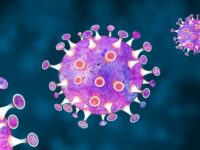“The greatest happiness is to vanquish your enemies, to chase them before you, to rob them of their wealth, to see those dear to them bathed in tears, to clasp to your bosom their wives and daughters.” This quote, by Genghis Khan, perfectly illustrates one key reason why the mutation in his Y chromosome was propagated to 0.5% of the world’s male population.
Khan, along with his early descendants, had a habit of slaughtering the men of the communities they conquered and collecting the women into harems or making them concubines. This resulted in wildly high procreation rates for men with lineage to Khan, with some of his sons each having over 40 children. Another possible factor that contributed to the astronomical increase in popularity of his Y chromosome mutation is the socially-motivated selection of his lineage, as his lineage represented power and strength as a leader. This phenomenon was so prevalent after his death that Tatars and Uzbeks — both descendants of Mongol clans that did not share Khan’s genealogy, the Golden Horde and Oirat respectively — invented false bloodline connections to Khan in order to bolster their status and notoriety.
In 2003, experts discovered five bodies from the Golden family in the Eastern Mongolian region of Tavan Tolgoi and sequenced their DNA. After comparing the DNA to modern DNA of Mongol descendents, a team of researchers at Chung-Ang University in South Korea determined that the bodies were likely a result of quda, a marriage alliance system between Khan’s Borjigin clan and the Ongud clan. All these individuals, including Khan, shared the R1b-M343 Y-haplogroup. Interestingly enough, the R1b-M343 Y-haplogroup has almost entirely disappeared from the Mongolian plateau, and the only people with this lineage reside in the Heilongjiang province of China. Modern individuals who genetically match the Golden family are located throughout Uzbekistan; Tajikistan; China; and Kalmykia, Russia.
There are two possible reasons — which are not mutually exclusive — that this distribution occurred. The first is a massive migration of Golden family descendants to Easturn Europe and Central Asia. The second is a massacre led by the Great Khans — the grandsons of Genghis Khan and their wives — that intended to destroy the beki kingdoms of inner Mongolia, ruled by the daughters of Genghis Khan. As one of the most prolific propagators of his genetics, Genghis Khan left his mark on the world in a way of which many other warlords could only dream.
PLoS ONE (2016). DOI: 10.1371/journal.pone.0161622
Gentika (2007). DOI: 10.1134/S1022795407030179
European Journal of Human Genetics (2015). DOI: 10.1038/ejhg.2014.285






